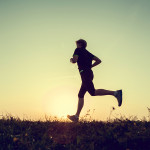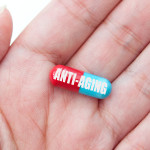By David Blyweiss, M.D., Advanced Natural Wellness
December 25, 2019
What if I told you I had a secret that could slow down how quickly you age?
In just a few weeks it can help you look and feel younger than you are. It lowers blood pressure, improves arterial function and slashes your risk of heart disease.
It can crush blood sugar and insulin problems associated with diabetes, melt excess weight off your body and slash your inflammation levels.
This anti-aging secret can even protect your brain from shrinking and cut your chances of Alzheimer’s by almost 40%.
It costs absolutely nothing, and goes to work immediately to offer all of these wonderful health benefits.
Would you do it?
Let me phrase this question another way…
What if I told you I was giving you only two choices — use this secret or suffer disease and early death?
MD Exposes the Hidden Danger to Your Eyes

When your eyesight starts to fail, it's a real problem. Suddenly you can't go to the grocery store... you can't get to the doctor if you have an emergency... you can't meet your friends for dinner…
Your "regular" doctor doesn't have time to keep up with the latest research. And the same goes for eye doctors. They go to school to learn how to fit you for glasses and contacts, but have no way of preventing the damage and loss of eyesight that threatens your freedom and independence.
Let me show you something that explains a LOT about how your eyes work.
In my FREE Special Report, I'll show you a HUGE, untapped resource for your eyes that safely and naturally restores clear, effortless eyesight.
Click here to get started...
Now would you do it?
The Fountain of Youth is at Your Fingertips
The secret I’m talking about isn’t really all that secret. Everybody knows about it.
What surprises me is how few people take advantage of it — since it’s pretty much the same thing as having the fountain of youth right at your fingertips.
I’m talking about exercise, but sometimes even that word scares people away.
Instead let me use the word “movement.” Simple movement on a daily basis will do a world of good for your health.
Just think of it this way — sitting still is like the new smoking. Years ago, we didn’t know how harmful it could be.
Today, we know sitting around all day is incredibly bad for your health. It leads to a variety of problems… obesity, high blood pressure, dementia, insulin resistance, heart disease… the list goes on.
The anti-aging benefits of regular physical activity have been proven over and over again. But there’s one story I often share with my patients that really drives the point home for them.
It’s the tale of ten groups of twins in their mid-thirties.
Now, family members typically grow up eating the same foods and developing similar habits. But a determined team of researchers searched long and hard to find twins who didn’t have the same exercise habits. And they succeeded.
What did they learn?
Are You Suffering From...
- Love handles and a pot belly
- Romance that isn't what it used to
- Forgetfulness and inattention
- Low (or no) strength and endurance
- A sex drive that's shifted into neutral...or worse
If so...you may have Mature Male Burnout. Click here to discover more about this unique condition and what you can do about it.
The twins who got less exercise had lower endurance and higher levels of body fat. They showed signs of insulin resistance, a precursor to metabolic syndrome and diabetes.
The more sedentary twins also had less grey matter – which is linked to dementia and Alzheimer’s – in certain areas of their brains.
This just goes to show that, no matter how you were raised, you and you alone, have the chance to control how well you age.
All you have to do is spend some time each day moving so you can thrive for years to come.
15-Minute Workout Anyone Can Do
This daily movement doesn’t have to be anything fancy. Just call up a friend and go for a nice walk around the neighborhood five or six days a week. Take your dog along. He’ll love it!
Getting out is more fun if you have good company. Plus, you’ll be more motivated to go if you know your friend is going to come knocking on your door if you don’t show up.
If it’s too hot outside, take your walk to the mall and enjoy a few hours of air-conditioning while you make laps. If you happen to buy a few new outfits along the way — no harm, no foul.
Think of this movement as fun. It’s a time you can socialize with your friends and do your body a world of good.
If you want to kick things up another notch, you’ll get the most dramatic results in the least amount of time with high intensity interval training, or HIIT.
The concept is simple. You perform a short burst of high intensity exercise, then take a short break before doing it again.
For example, after warming up for a few minutes, walk briskly or sprint as fast as you can for 30 – 40 seconds. (The brisk walk or sprint depends on your current fitness level. If you can’t sprint, don’t. If you can, then go all out. The idea is to push yourself, but not beyond your capabilities.)
Then, follow it with 2 to 4 minutes of easy walking. Repeat 4 to 6 times. The workout ends with a 3 to 4 minute cool-down.
As it becomes easier, try increasing the intensity and shortening your rest time. (i.e., a 30 second full-out burst, followed by lesser and lesser minutes of easy walking.)
This same tactic also works great for other activities. So, depending on your level of fitness, don’t hesitate to apply this concept when you’re riding your bike, swimming or rowing.
You can also implement it with more structured exercises, like jumping jacks, push-ups, sit-ups, squats, burpees and even jump rope.
Take a friend along and push each other to go harder and longer. Then reward yourselves with a delicious post-workout smoothie. Just remember to make it fun. It’s the key to keeping your daily habit.
And remember! The longest journey begins with a single step. So don’t wait to get started and make it a habit.
SOURCES:
Cherkas LF, et al. The association between physical activity in leisure time and leukocyte telomere length. Arch Intern Med. 2008 Jan 28;168(2):154-8.
Alves, A. Physical activity and coronary artery disease: Looking beyond risk factors. Archives of Exercise in Health & Disease. 2014 Jun;4(2):251.
Geda YE, Roberts RO, Knopman DS, eta al. Physical exercise, aging, and mild cognitive impairment: a population-based study. Arch Neurol. 2010 Jan;67(1):80-6.
A.J. Gow, M. E. Bastin, et al. Neuroprotective lifestyles and the aging brain: Activity, atrophy, and white matter integrity. Neurology, 2012; 79 (17)
Rottensteiner M, et al. Physical activity, fitness, glucose homeostasis, and brain morphology in twins. Med Sci Sports Exerc. 2015 Mar;47(3):509-18.







